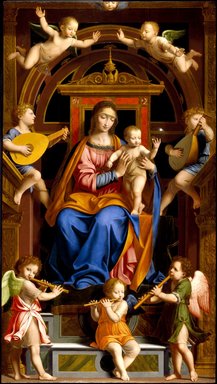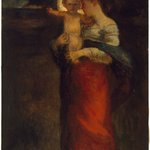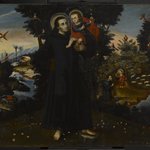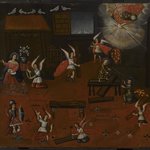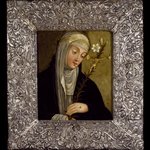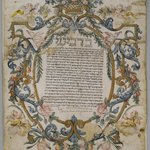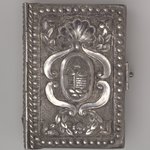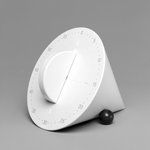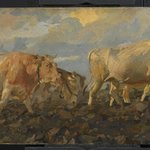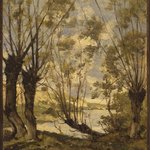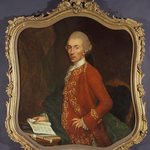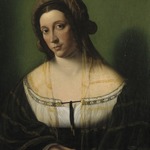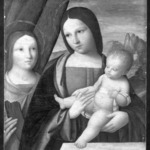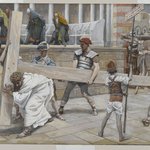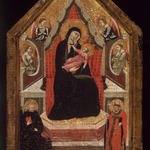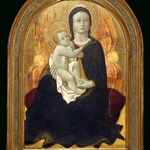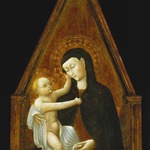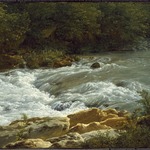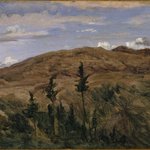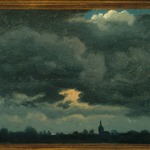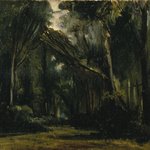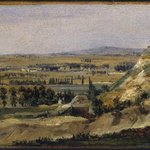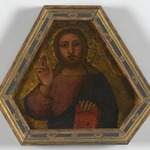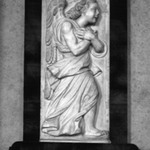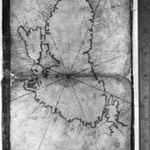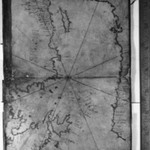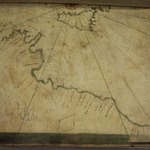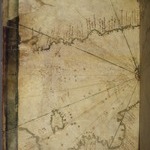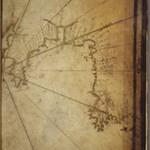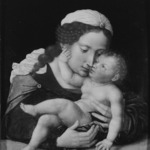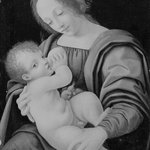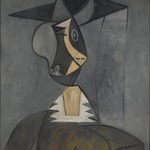What is in baby Jesus's hand? The Holy Spirit? It looks like a glass orb.
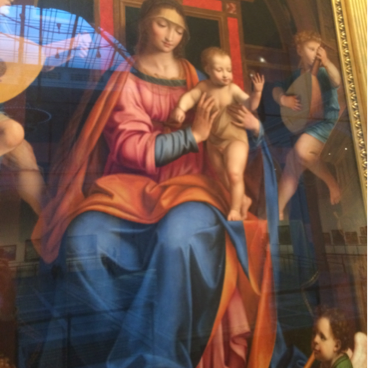
Yes you're right, the Christ child is holding a crystal orb. It is meant to symbolize that he is the "light of the world." I love how the delicate way the Madonna holds the Christ child in this picture actually mimics how he holds the fragile orb.
I love this work.
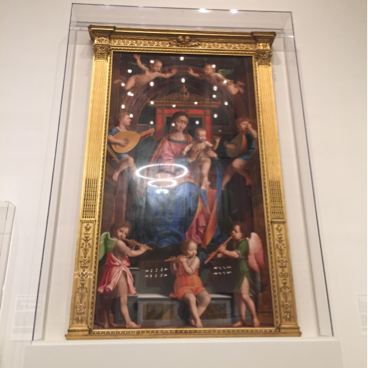
It is fantastic isn't it? Another version of this painting exists in the Church of San Magno in the town of Legnano near the Italian city of Milan. The Milanese artist Bernardino Luini closely followed the style of Leonardo da Vinci who was working in Milan at the time and their work has a lot in common, especially the richly colored animated figures with a sense of shadow and relief. The composition is typical of Venetian altarpieces showing enthroned Madonna surrounded by a choir of angels.
Wow, thanks!
You're welcome!
How did they achieve a blue this vivid?

The beautiful blue of Madonna's cloak was made using the pigment ultramarine, derived from the precious blue mineral lapis lazuli. Found exclusively in the mountains of northern Afghanistan, lapis had been laboriously mined by the Egyptians, Greeks, and Romans from early antiquity. Towards the end of the Middle Ages, it began to be ground into powder and made into ultramarine, quickly becoming the finest and most expensive pigment of them all.
Why are the baby Jesus's face and that of the bottom cherub's so similar? Would these kids be modeled after one child?
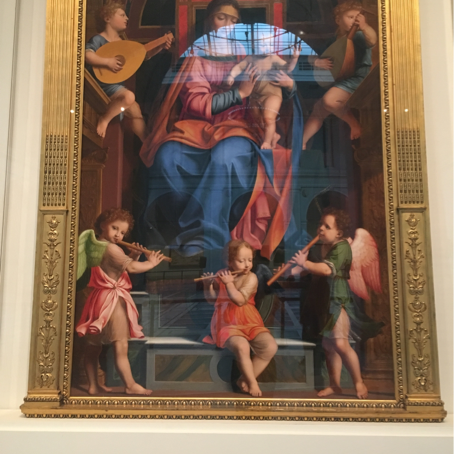
Although we do not have anything in our notes that suggests that the two faces were modeled on the same child, this piece was created through studio production, with more than one person working on a work of art at any one time. The artist, or one of his assistants, would likely have modeled the facial details off of a generic model or one of the popular pattern books circulated around workshops. There was no need to distinguish between the features of angels.
Did most religious paintings from the Italian Renaissance use these types of colors.

Many paintings from this period use the same color palette because artists were working with the same materials. But some of the colors has special symbolism.
For example, the deep blue came from the precious stone lapis lazuli. This was very expensive and so was only used for the holiest figure in the scene (often the Virgin Mary).
The bright colors of this painting are typical of the High Renaissance. Notice how complementary colors were placed next to one another: orange with blue; red with green etc.
What is important about the angels in this piece?
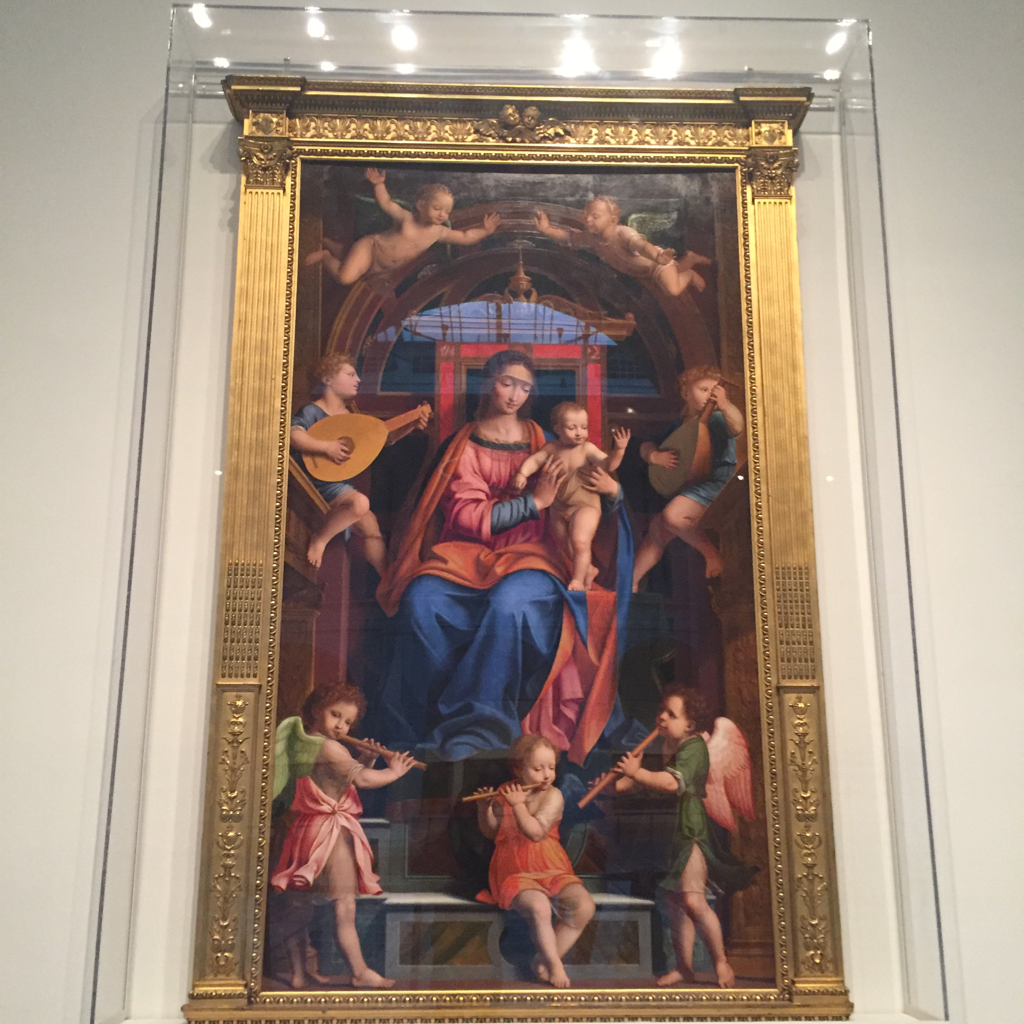
The angels help to construct the painting's composition and frame the Virgin and child. They create three rows of visual interest and direct the viewer’s attention to the center of the painting. The instruments they play also lend a sense of celebration to the subject.
Do the colors on Mary's dress symbolize anything?
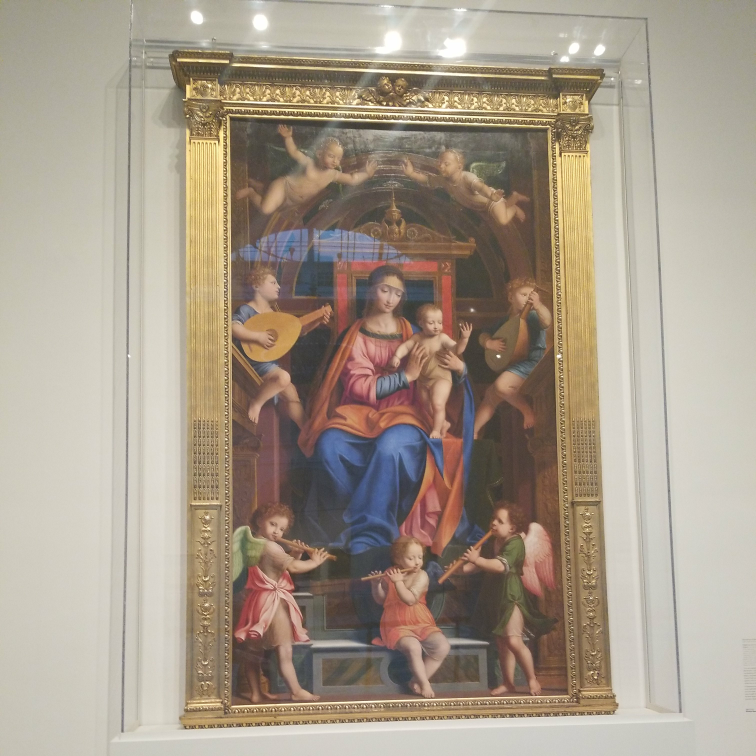
They certainly do! Mary usually wears blue to signify her majesty. Blue pigments were costly, so anyone shown wearing such a vibrant blue should be recognized as very important!
For Mary, specifically, blue also has connections with the celestial blue of heaven.
Why so many angels?

The child musicians can be referred to as "putti," an Italian term used to describe winged infant characters in art. They are playing flutes and lutes.
Their music celebrates the presence of the Christ Child.
You can also see the artist's careful choice of colors in their garments, to create contrast. For example, red and green are on opposite sides of the colorwheel and are placed next to each other.
Why is Jesus naked?
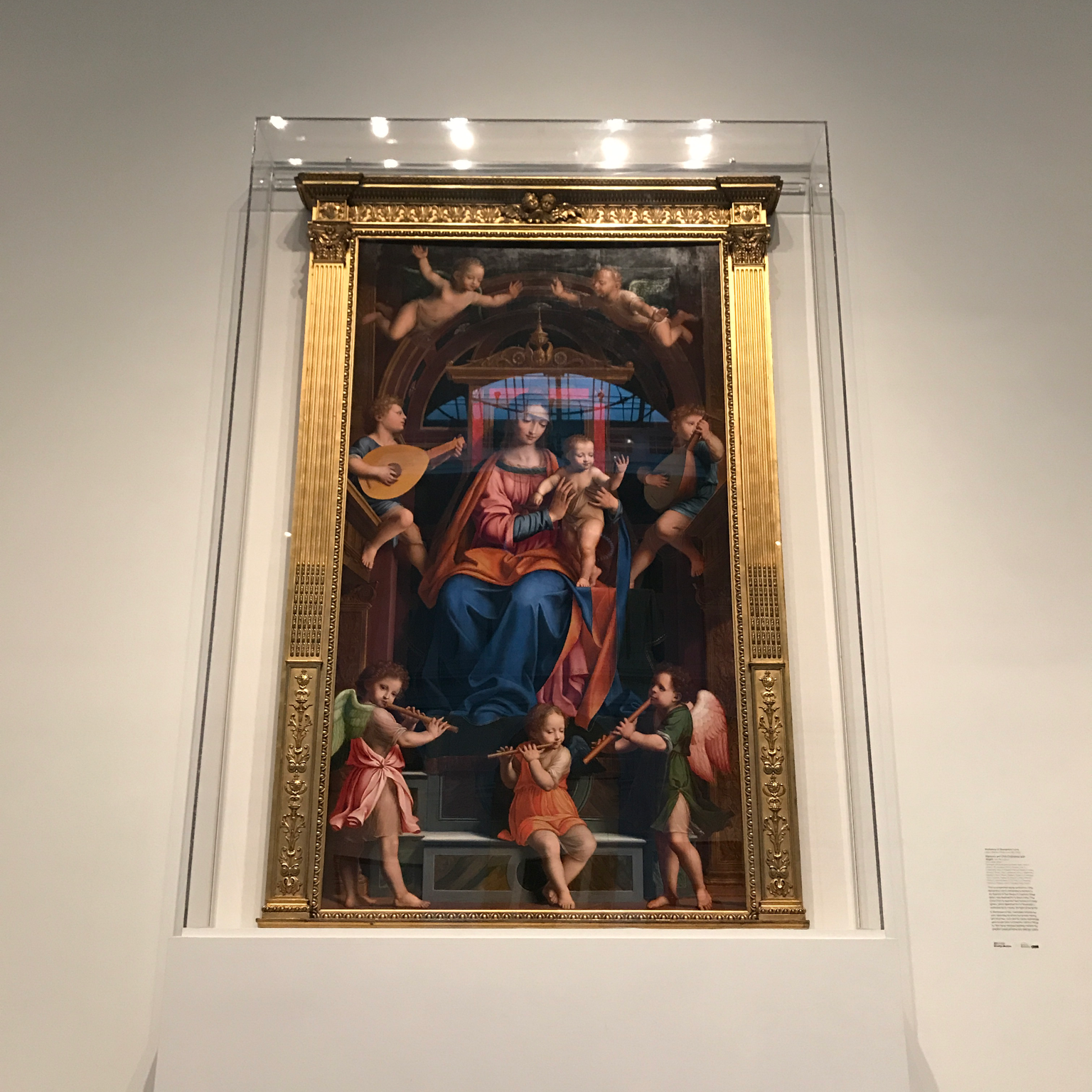
Part of the reason Jesus is naked here is because he is shown as an infant. This is also a way to show his entire body emphasizing that he was made by God. You may have also notice the sheer fabric that is included as a suggestion of modesty.
Why is the angel on the left bottom facing us? The rest of the figures are all facing into the painting.

I can't find any information that might indicate the significance of the angel's eye contact. That said, formally it does serve to bring the viewer into the scene.
How do you interpret the angel's eye contact?
Maybe as a way of trying to let the watcher know we are watching a beginning of something amazing.
I was curious about the symmetrical nature of this piece and how there is a horizontal element that breaks up the bilateral symmetry. Is that an intentional reference to the cross?
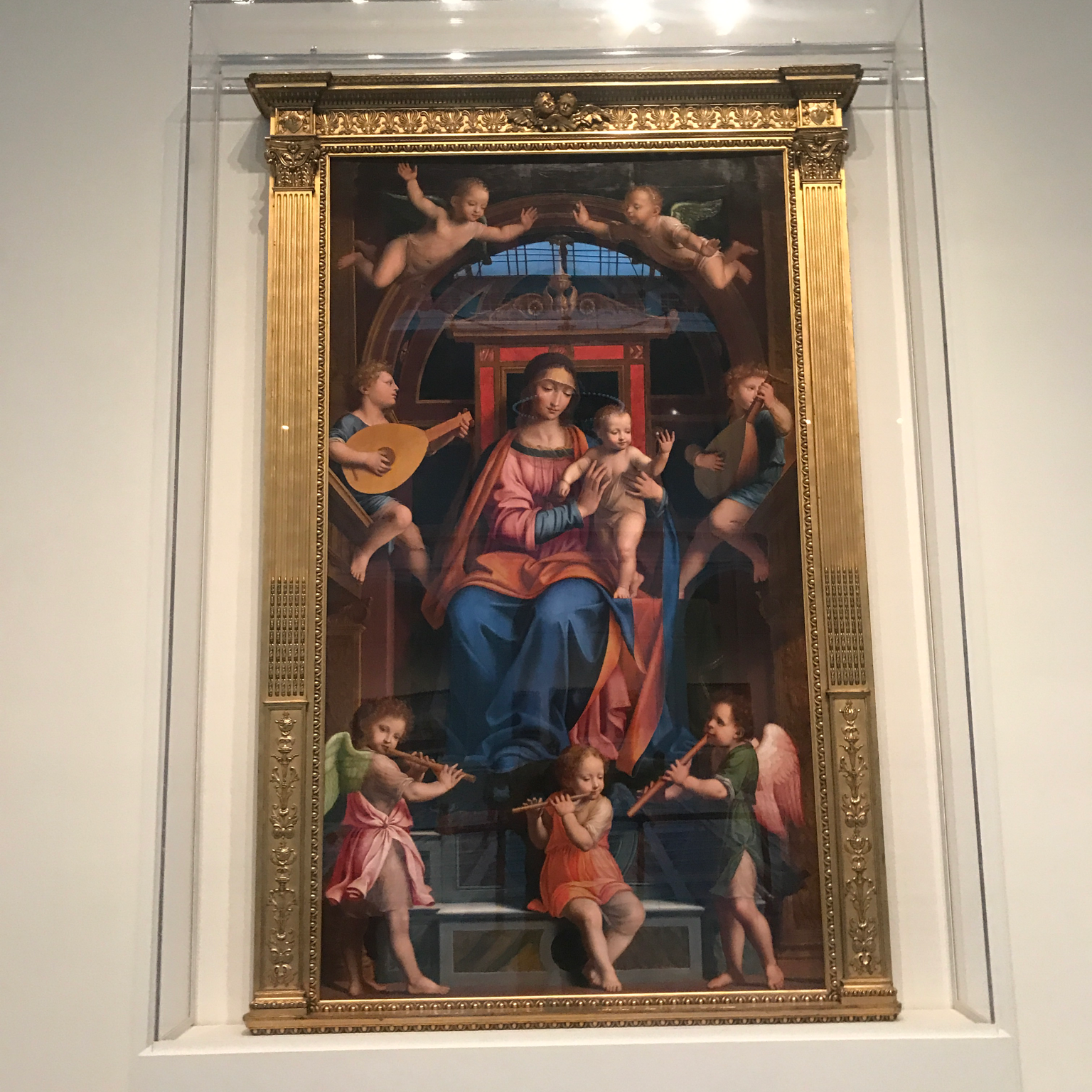
Certainly! Christian art and architecture often includes direct reference to the cross as the symbol of the religion. You may have also noticed that Mary's head is at the crux of this indicated cross further emphasizing her importance in the composition and in belief.
This is very evocative of a Leonardo-esque figural approach, did this artist have any relationship with him?

Luini was, indeed, deeply influenced by Leonardo Da Vinci, notably in his compositions, use of chiaroscuro (high contrast of light and shadow), and facial types.
It says this was a workshop piece, meaning a collaboration. Was this a common practice?
Workshop collaboration was definitely common during the Italian Renaissance, yes. Works of popular painters like Luini were in high demand, workshops allowed them to produce more and in less time.
Are the design and the gold color of the frame significant? What about the disembodied heads that adorn the top of the frame?

Yes! It is highly unlikely it is original to the work, but the frame was chosen because it captures the general shape and style that the work would have likely originally been shown in! In Renaissance Italy, frames were often reminiscent of architecture: Notice how the sides resemble fluted columns.
Thank you!
Is the color palette significant? It seems somewhat regal?

It does include some symbolic elements. Mary's blue mantle, for instance, suggests a color that would have been particularly expensive to get! The shade of blue known as ultramarine (originally derived from lapis lazuli) was indeed reserved for royalty and other elite subjects.
Interesting, thank you very much!
Was the frame made in same time period as the painting?
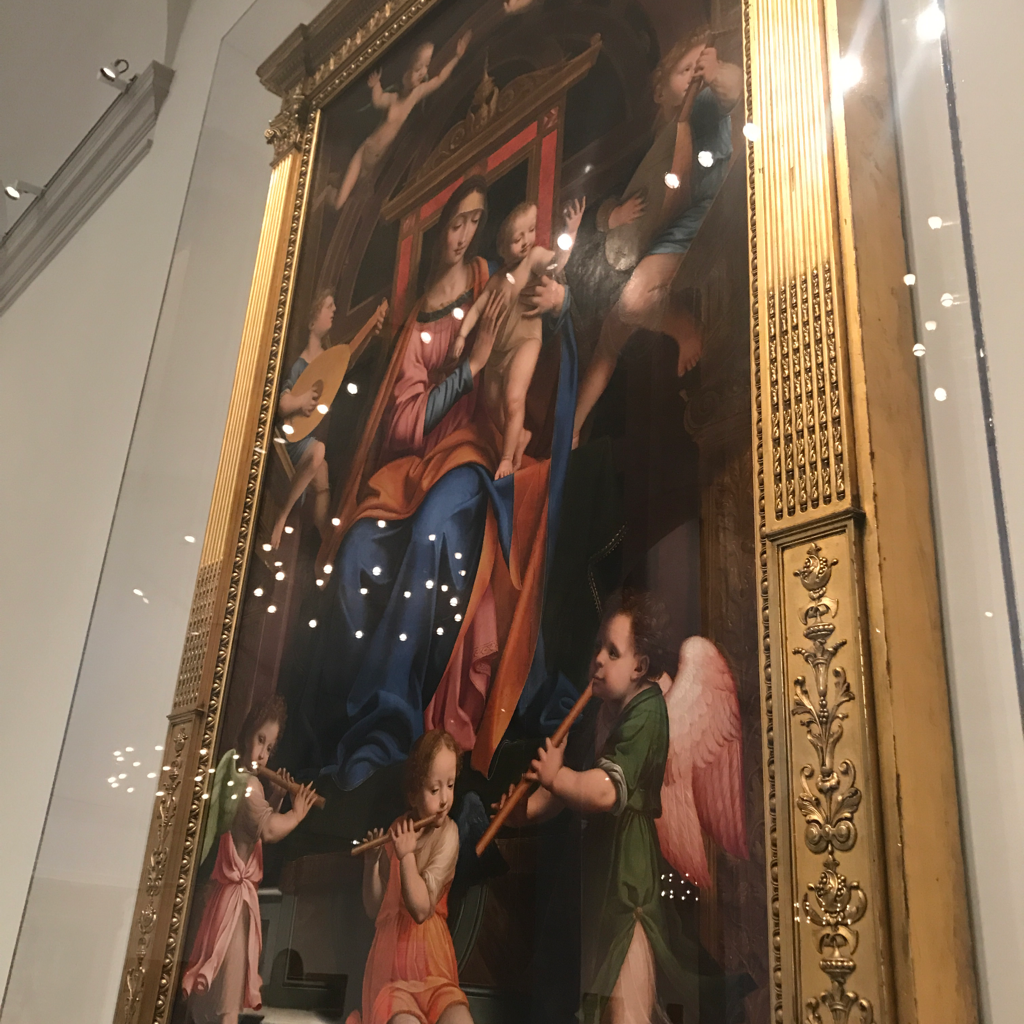
It is unlikely that the frame on this work is original. It was, however, chosen for this work because it has the shape and form of the type of frame this painting would have originally been in.
What's the history behind this painting?
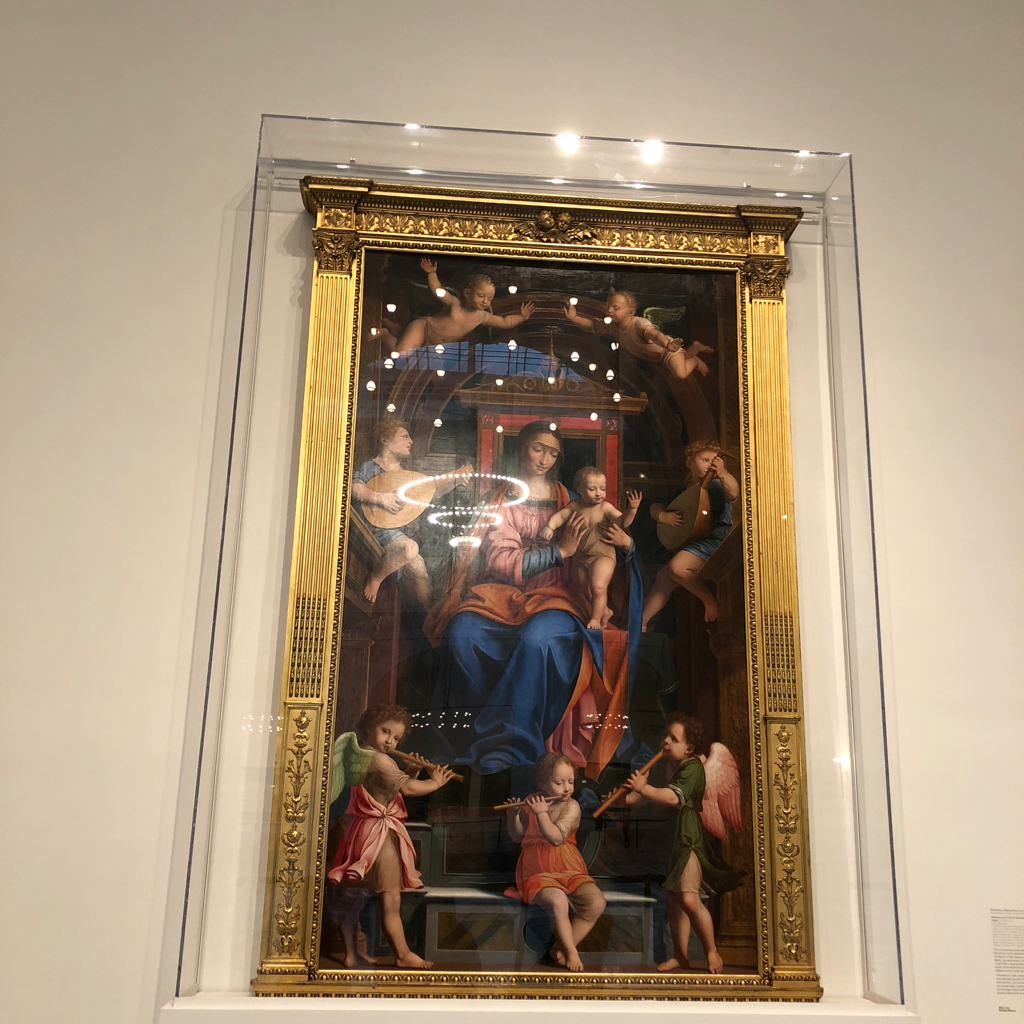
An altarpiece is a painting of holy subjects designed to be the focus of devotion and prayer.
Religious paintings were important in the Medieval and Renaissance Europe as visual aids because many people could not read.
Bernardino Luini was a well known painter of the Italian Renaissance. He and his workshop were based in Milan in the late 15th and early 16th centuries.
Scholars think he was influenced by the work of Leonardo da Vinci.
During the Renaissance, Christ's humanity became a popular subject. The aim was to inspire followers to model their lives on that of Christ.
Are the people surrounding Mary and Christ all angels?

Winged children are known, in art, as "putti." Here they do represent angels!
They are all playing instruments that were popular in that time period, including lutes and different kinds of flutes.
I thought Mary only ever wore blue, but here she is also wearing pink!

She often wears blue and red or pink together---the blue hinted at the heavenly skies, and since blue pigments were very expensive, it also showed her importance in the Christian narrative.
Red is often a color associated with royalty, also showing her high status in this story and this work. Red and this particular shade of pink were somewhat interchangeable in Italian Renaissance painting.
What is some of the symbolism in this painting?
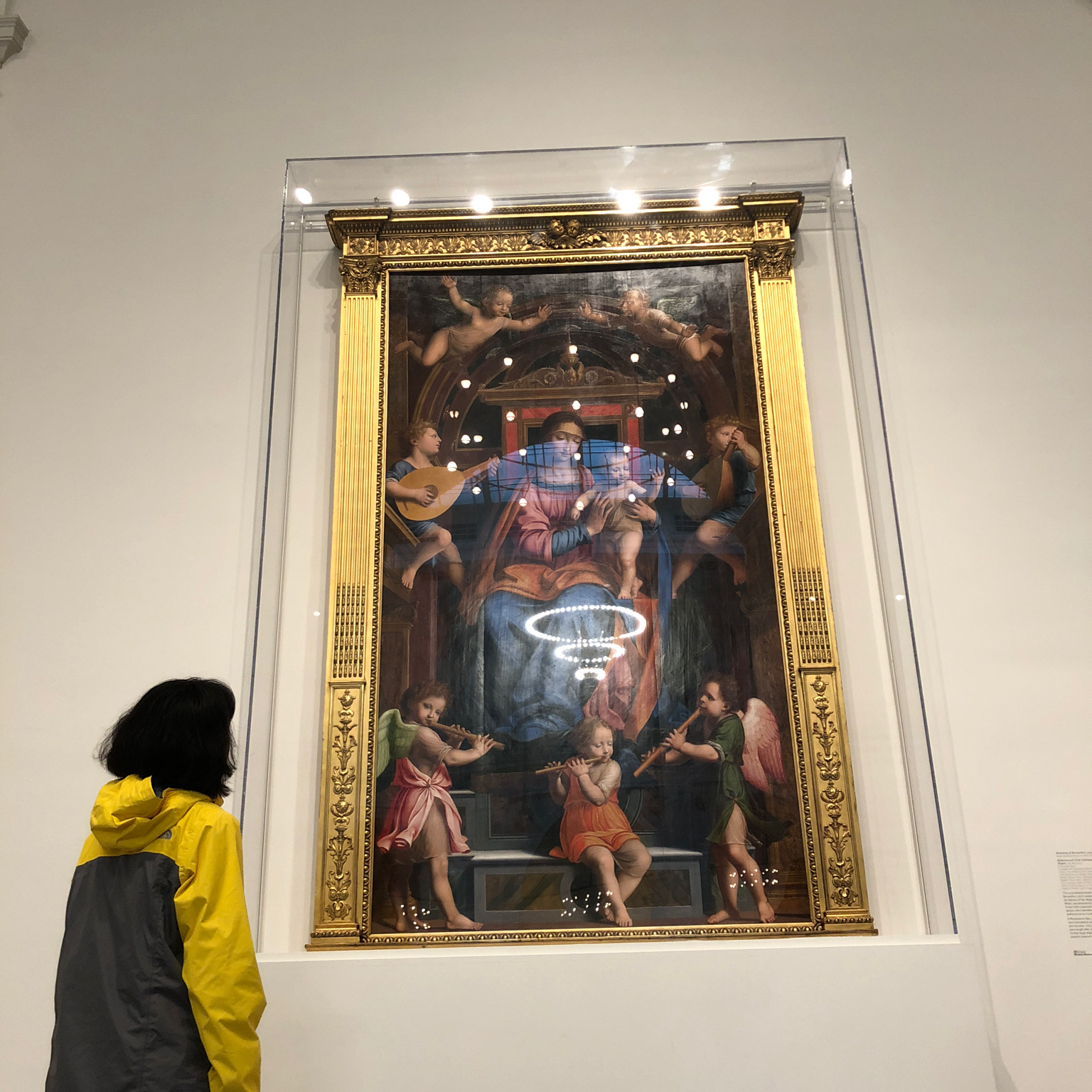
The small clear glass orb, for example, in the Christ Child's hand is a reminder that he came to earth to be "the light of the world."
The blue of the Virgin Mary's gown is also symbolic. It is the color of the sky and therefore of heaven. Also, since blue pigments were very expensive, it shows that she is very important!
I'm confused about lux mundi. What does 'the light of the world' mean?
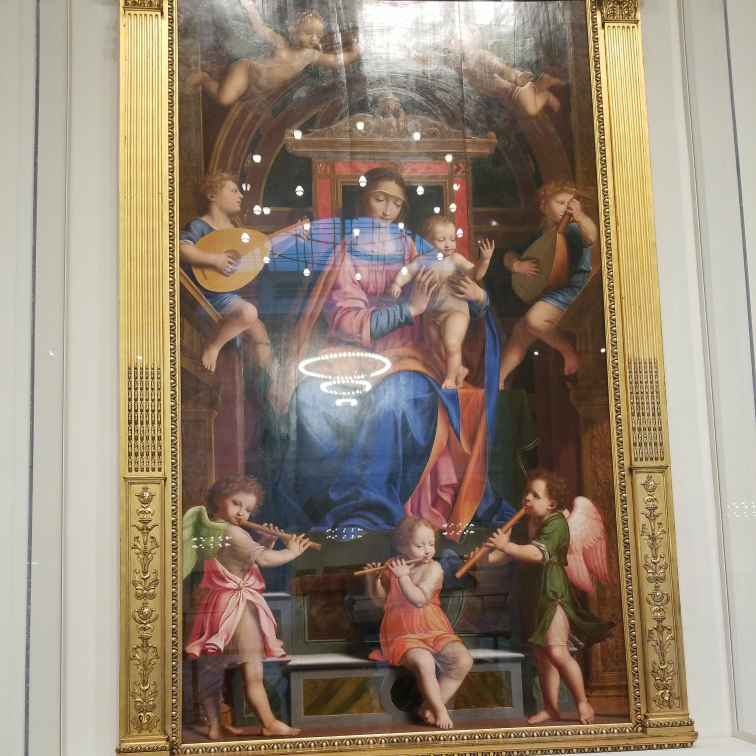
Lux Mundi is a reference to a quote from the Bible. In the New Testament (John: 8:12), Christ says he is the light of the world, in Latin: "ego sum lux mundi."
The term and associated symbolism are used to enhance the sense that Christ is divine and a positive force in the world
What is the difference between the Milanese school and the Florentine or Roman schools?

Artists working in Milan were particularly interested in perspective and foreshortening, classical architecture, and depictions of space. They were also very interested in naturalism, while southern Italian artists looked more towards strong Classicizing in their work.
I see that this is an oil painting. Weren't oil paints invented by Northern Europeans and not used during the Italian Renaissance?

Oil paints were indeed invented in Northern Europe. They were first used in the 15th century and quickly spread to Italy. This painting was created in the late 15th or early 16th century.
What is the message in this painting?
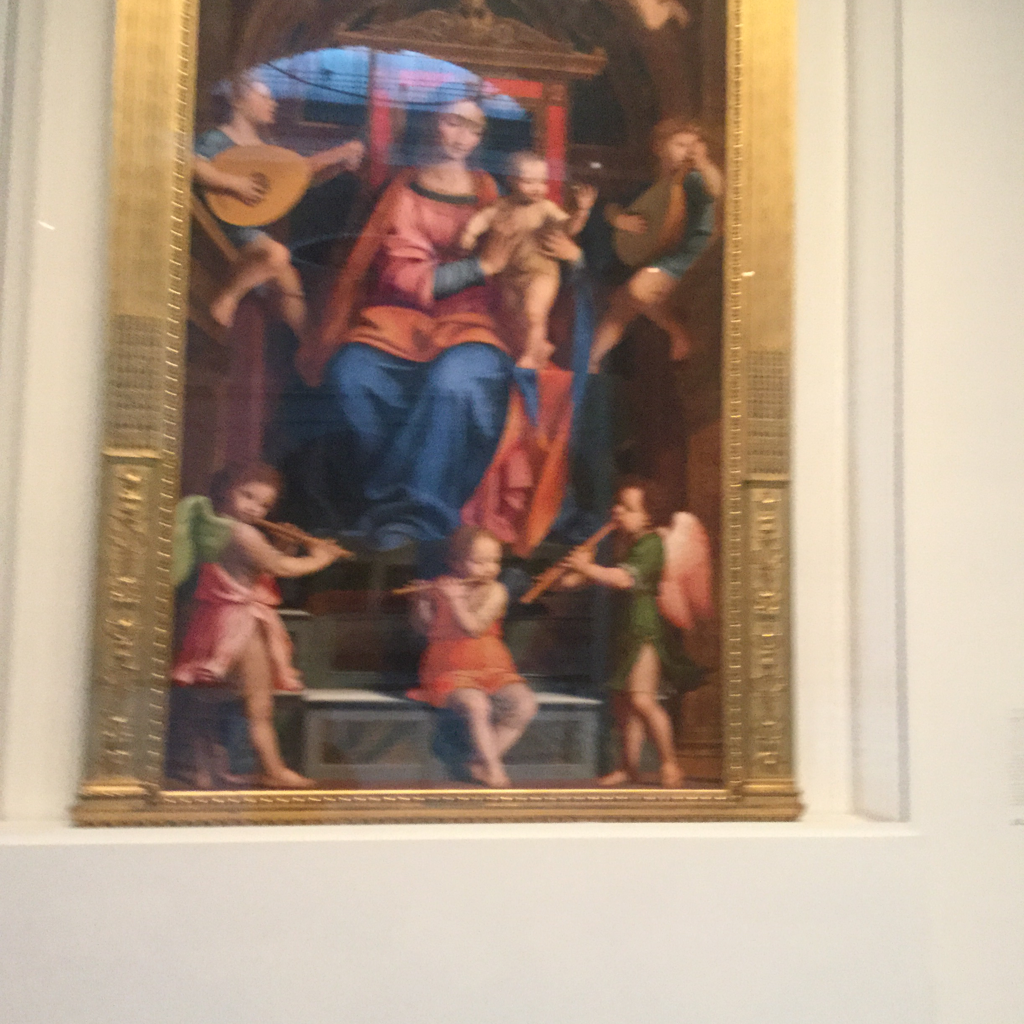
The message is a religious one, highlighting and celebrating the two central figures, the Virgin Mary and Jesus Christ, who are the most important figures in Christianity. The Christ child holds a translucent sphere that represents his status as "The Light of the World," basically telling us how important he is. This work would have been placed on an altar in a church and used as the focus of worship.
Why do the children at the bottom have wings?

All of the children around the edge of this painting are angels, which is why they have wings.
Hey do you know if there’s any significance in the number of angels/babies in this piece?
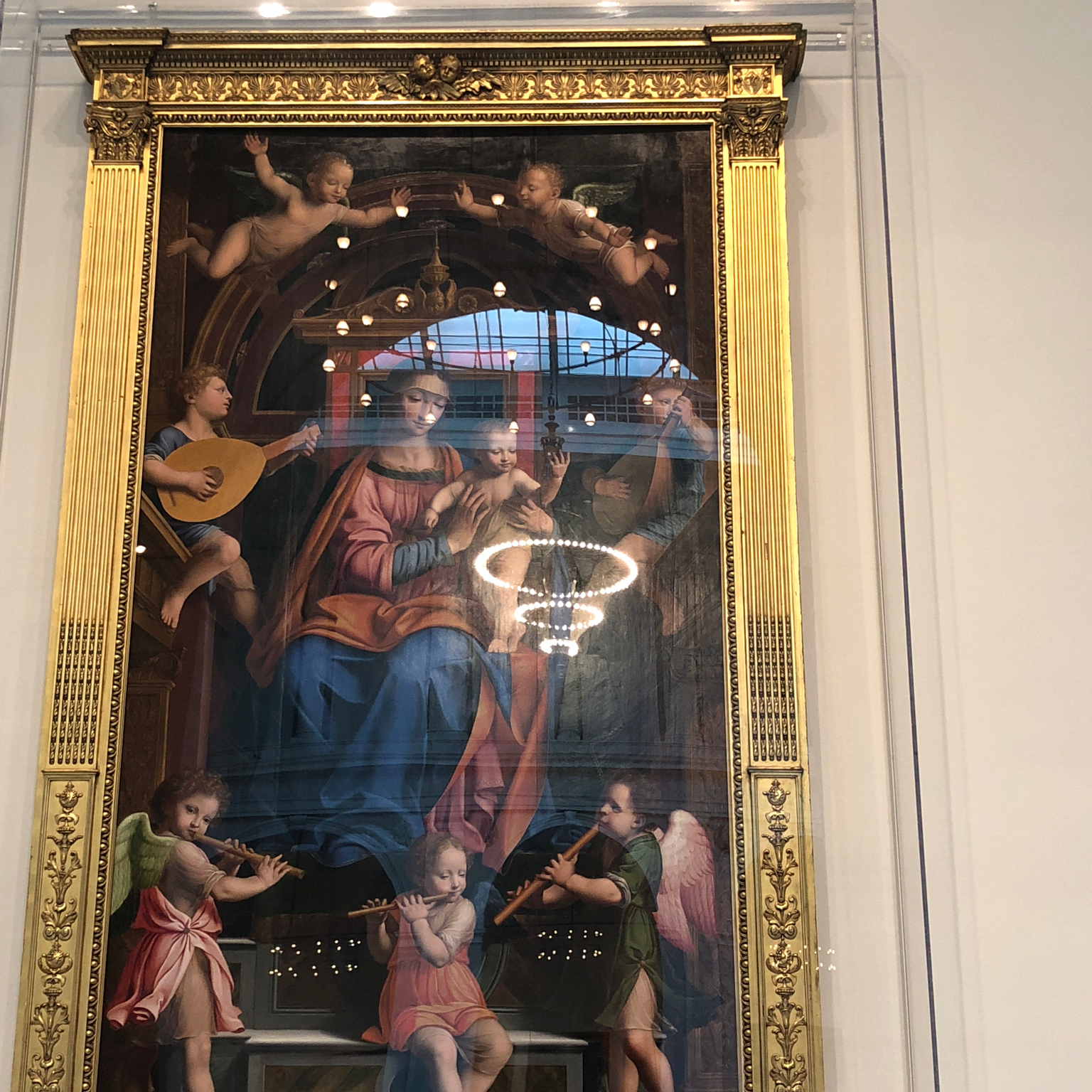
I looked into the significance of the number seven in Renaissance Italy and it looks like it is most often associated with representative lists like the Seven Virtues, Seven Deadly Sins, Seven Sorrows of the Virgin, et cetera. Since each angel is clearly not a representative of a different concept, it does not seem that one of those lists is at play here. The three registers of angels may loosely refer to the holy trinity. Other than that, the arrangement of the angels functions to frame and balance the composition. Both were important concepts in Renaissance era painting.
Thank you!
How expensive were pigments in 1500s Europe relative to other goods (generally speaking)?
That's a great question, and I can say immediately it depended on the pigment! Certain blue pigments, for example, could be very costly.
It could vary considerably based on where the pigment was coming from and where it was going to as well!
Oh my gosh thanks!
How expensive was it was to paint a portrait painting (after materials and canvas, etc)?
It definitely depended on the size of the canvas or the art object.
I found a fascinating resource that let me know that a typical Renaissance painting cost 5 cows, or 875 grams of silver (thats 26,750 loaves of rye bread in Brussels). These numbers are for 1550.
That includes labor, so the material costs were less than five cows.
This is INCREDIBLE! What resource did you use?
I KNOW! The Metropolitan Museum of Art did an exhibition about the relative cost of artwork in the Renaissance!
You can read about it on their website here: https://www.metmuseum.org/blogs/now-at-the-met/2017/curating-relative-values-counting-cows
You've been so helpful! Thank you so much!
Tell me more.
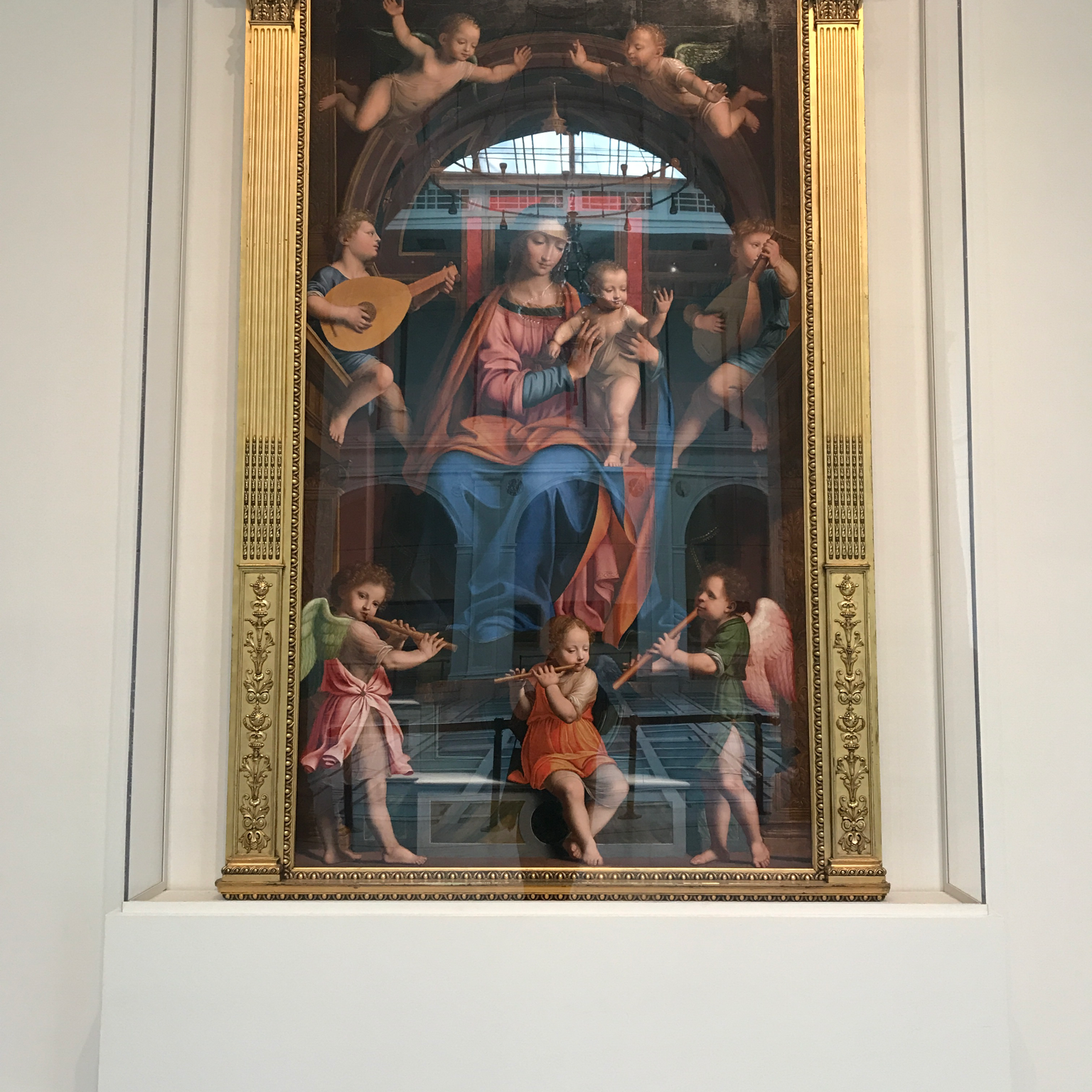
This work is an altarpiece, which functioned as a focal point and instructional tool during worship for centuries in Christian Europe. Visual representations of Biblical characters were essential, as most people in society at the time were illiterate.
At the center are the Virgin Mary in her signature blue cloak with the Christ child in her lap holding a clear crystal sphere. Lutes, the stringed instruments at either side of the image, were considered the "prince of instruments" in Renaissance Europe; the instrument was prized for the way that talented players could produce two or more melodies at the same time. Flutes, in the Renaissance era, were used to accompany other instruments and/or voices. Details like this made Biblical images more relatable.
Why is Jesus's hand always up?

Jesus is often shown with one hand raised for a variety of reasons. In this painting, his leftright hand he is holding up a crystal orb, a representation of the fact that he is "light of the world." In other paintings one hand may be raised in a gesture of blessing.
Are these both from the Renaissance?
Yes! They are both considered Italian Renaissance paintings (roughly 14th to 16th centuries). Zanobi Strozzi was working in Florence, arguably the center of the movement. Bernardino Luini was working in Milan and was heavily influenced by the style of Leonardo da Vinci.
